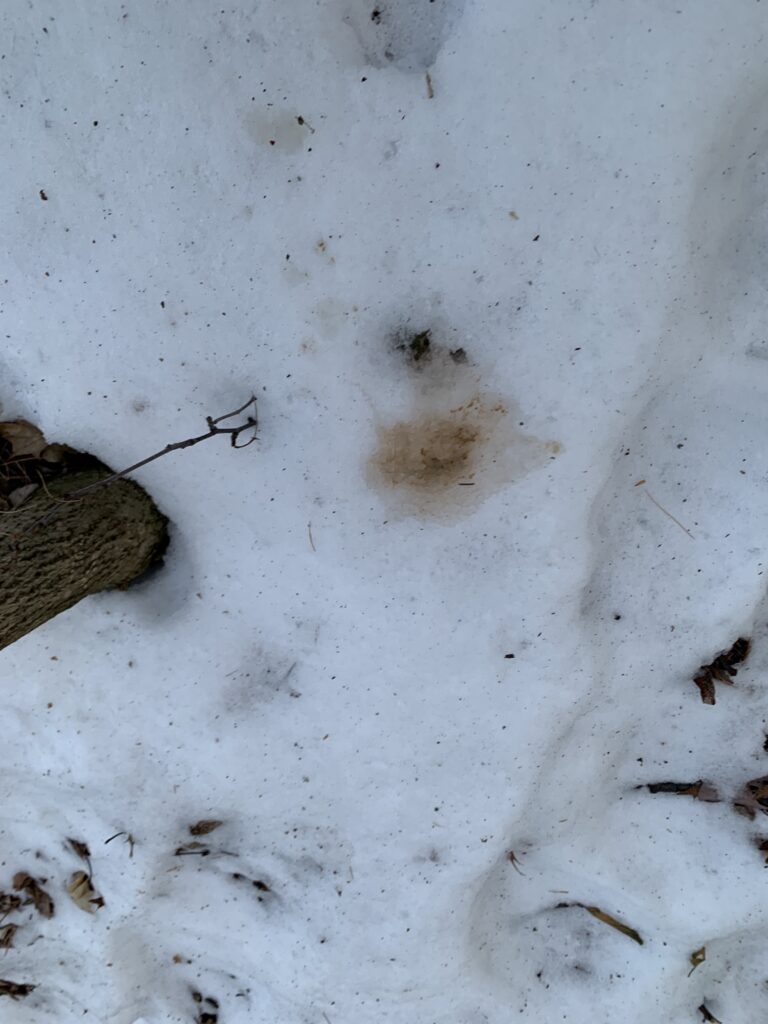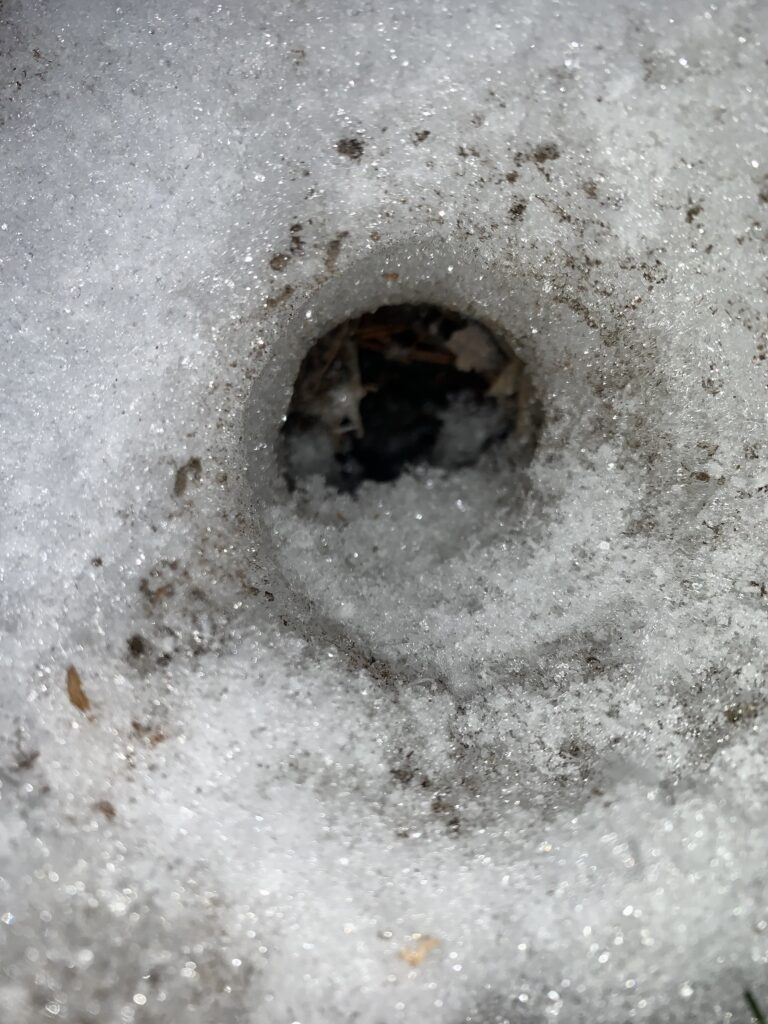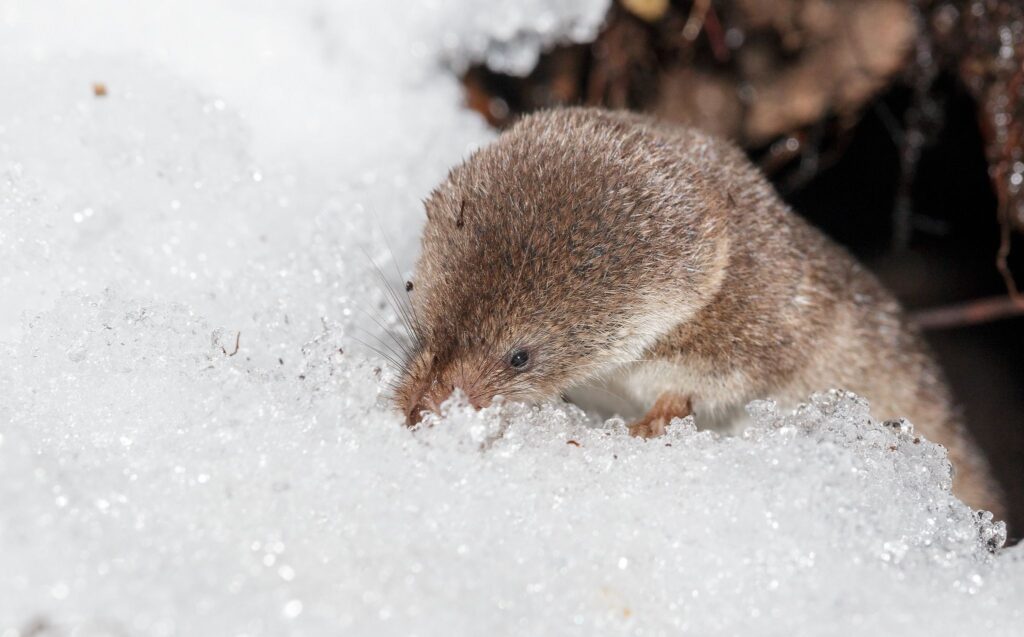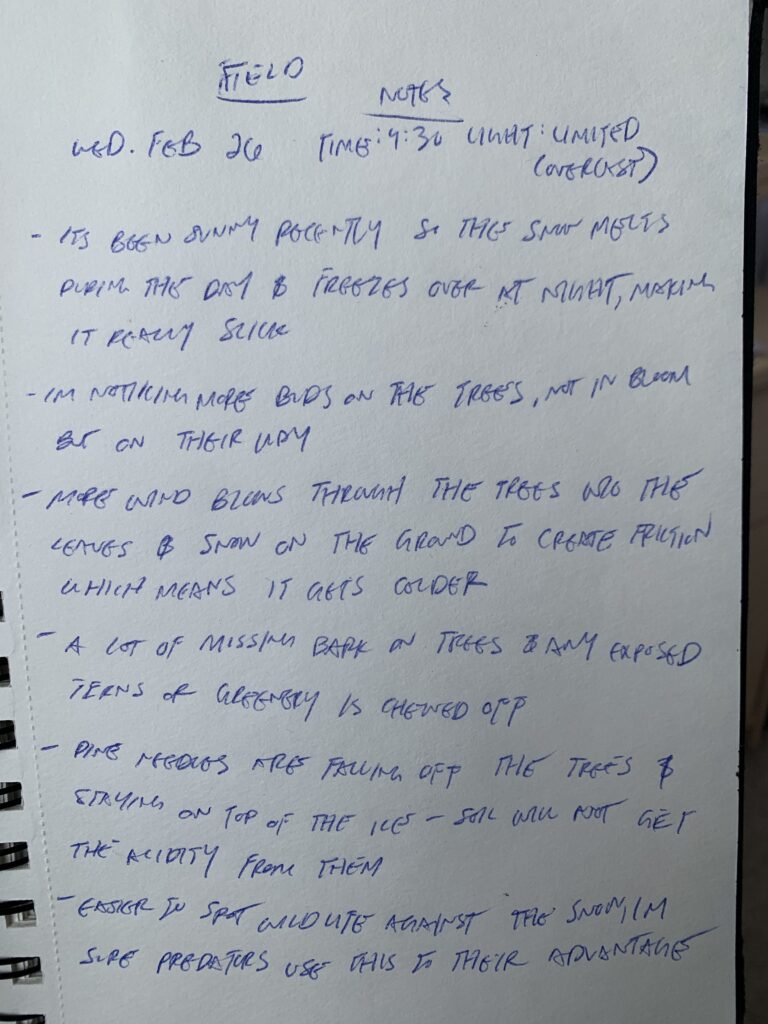Another month went by and some interesting changes have happened in Trinity woods. From animal life to plant life, nature is trying its best to survive in the harsh winter conditions of February.
As usual, when I went out to observe, I saw grey squirrels chasing each other up and down trees, some urine likely left behind from deer, and crows flying above the canopy.


An animal I had not noticed before my most recent visit was the masked shrew. This week, I found a whole that could be a masked shrew hole. After I found the shrew’s home, I did some research to learn more about its lifestyle.

According to SUNY College of Environmental Science and Forestry, the Masked Shrew burrows in loose soil or snow and creates tunnels that are about .75 inches in diameter, which matched up with the size of the tunnel pictured above. Masked Shrews also live in the snow during the majority of the winter but it still active and goes out to hunt during the night (Holland, 2019). This tunnel looked like it was frequently traveled through because the snow was packed tightly, making me think that an active animal (like a shrew) would have to live in it.

Insects comprise 65% of the shrew’s diet (ESF, 1988). The shrew is a carnivore that, other than bugs, will eat small animals like salamanders or little birds. These tiny rodents are primarily nocturnal and spend their nights in the winter looking for dormant insects. They are predated by snakes, hawks, and owls.
Shrews interact with their environment in many different ways. Shrews do not store their food (Holland, 2019) so they compete with other insect-eating species like bats, owls, birds that also do not store their food. Shrews also have a complex social system that affects other species. Shrews will “twitter” and make short squeaking sounds to communicate. In the winters, when sounds travel better, these communications could draw in predators easier than usual.

Since my last visit, the Trinity Woods seems a little more active. Ferns and Lichen are peaking through parts of the snow and waiting for a deer or other herbivore to spot it. The sound carries especially well because the ground is ice and there are no leaves to break up the sounds waves so when the F-35’s flew by, the sound projected louder than usual.

Lastly, I noticed that Pine Needles had fallen off the trees at an unusual pace. I am guessing that this occurred from the strong winds we’ve had lately. Back at our Jericho Lab, we saw how pine needles add acidity to the top layer of soil (Higgins, 2019). I am wondering how this will affect the acidity of the soil in the spring since the pine needles cannot decompose in the soil and only on top of the ice at the moment.
Works Cited
ESF Office of Communications, S. (1988). Masked Shrew(Sorex cinereus Kerr) From Saunders, D. A. 1988. Adirondack Mammals. The State University of New York, College of Environmental Science and Forestry. 216pp. Retrieved February 28, 2020, from https://www.esf.edu/aec/adks/mammals/masked_shrew.htm
Four Oaks. (2020) Eastern Grey Squirrel [Photograph]. Wildlife NYC. Retrieved from https://www1.nyc.gov/site/wildlifenyc/animals/eastern-gray-squirrels.page
Higgins, H. (2019). Jericho Research Lab. Jericho Research Lab. Burlington, VT.
Holland, M., & Kaneko, C. (2019). Naturally curious: a photographic field guide and month-by-month journey through the fields, woods, and marshes of New England. North Pomfret, Vermont.: Trafalgar Square Books.
Knutsson, H. (2017, Oct 23). A Common Shrew In the Snow. [Photograph]. Retrieved from https://www.newsweek.com/when-winter-hits-tiny-shrews-survive-decreasing-head-size-690667
